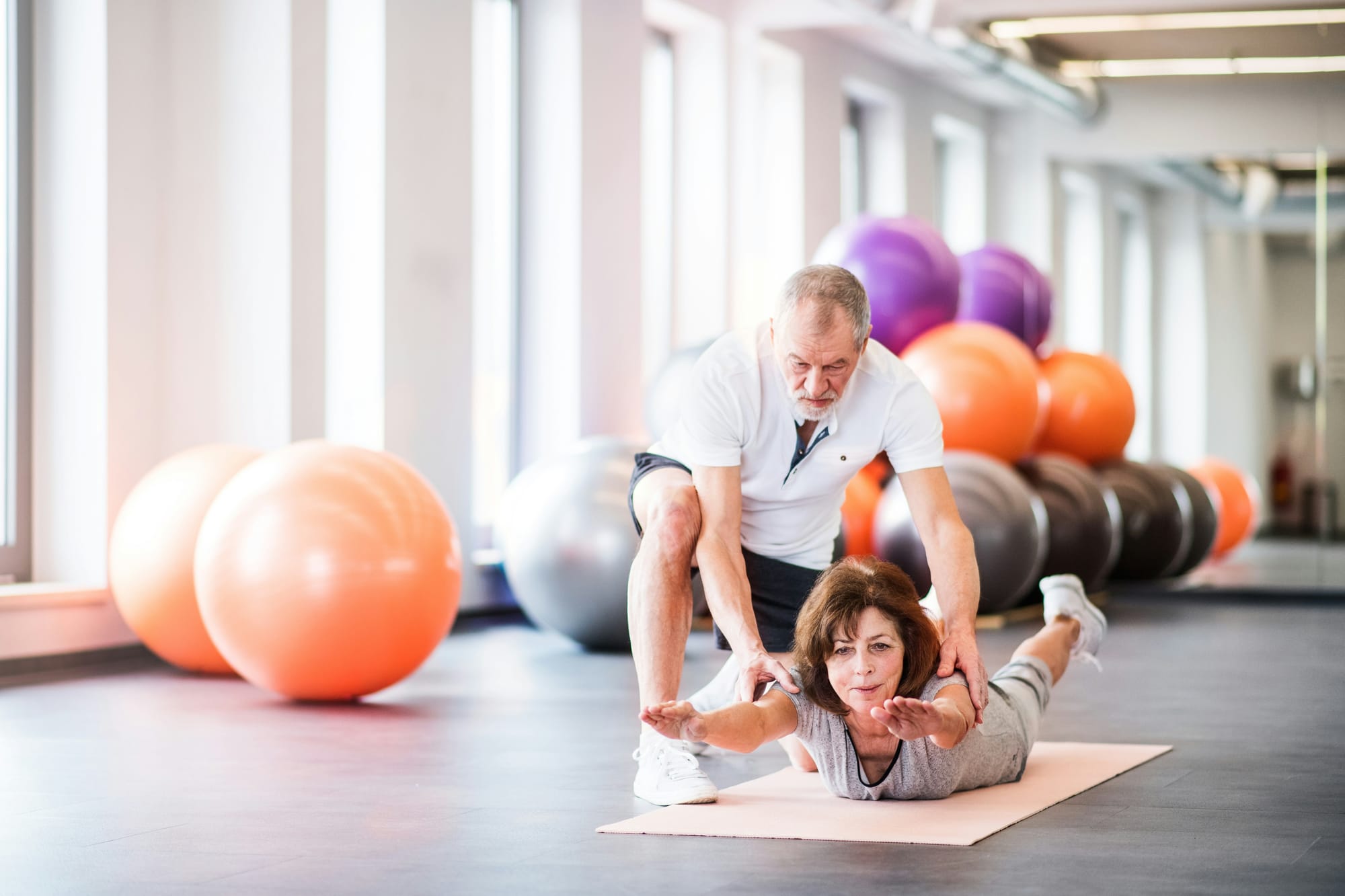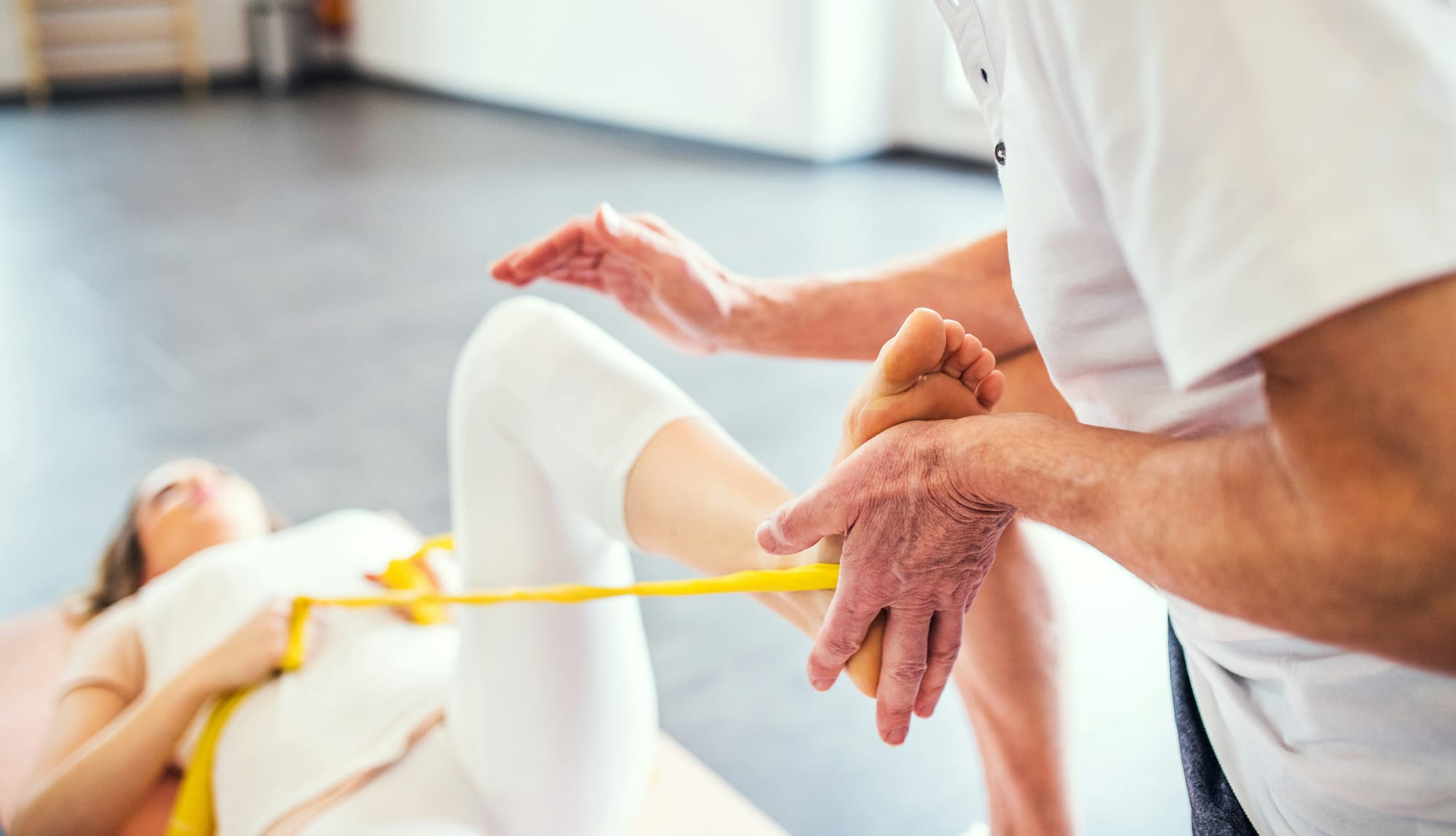Efficacy of available treatment methods for non-specific back pain: an overview
Not all forms of physiotherapy are equal. This article provides an overview of the scientific evidence for the efficacy of various measures for the treatment of non-specific back pain.

In the current debate about the tariff for physiotherapy in Switzerland, the term 'physiotherapy' is often used as an umbrella term for many different treatment methods. However, physiotherapy includes various practices, some of which differ greatly in terms of efficacy, suitability and cost-effectiveness. It is therefore not appropriate to make a collective assessment of physiotherapy with regard to the these criteria.
In this article, we present an overview of the scientific evidence for efficacy of the physiotherapeutic treatment options of non-specific back pain, organized according to typical methods.
Low back pain has been the most common cause of work disability worldwide for at least three decades and causes enormous costs: as direct treatment costs in the healthcare system and through economic productivity losses. To assess the extent to which physiotherapy methods are an effective treatment for non-specific low back pain, we searched the Cochrane Database of Systematic Reviews, one of the largest internationally recognized databases of medical reviews. And it turns out: some methods are significantly more effective than others - for others it is even likely that they are no more effective than a placebo or no treatment at all.
Which treatment methods are used in physiotherapy?
Various treatment methods are used in physiotherapy. These include active exercise therapy, guided passive movements and pressure through therapeutic hand movements and massages, as well as physical applications with cold, heat, electrical stimuli or ultrasound. However, physiotherapy is not limited to the direct therapy that takes place in the physiotherapy practice or hospital. Another important goal is to instruct patients on how to integrate health-promoting behavior into their everyday lives.
Which treatment method is selected for a patient depends on several different factors. These include, of course, the diagnosis and the therapy goal, but also personal preferences and the patient's general physical and mental condition, as well as the availability of spatial and technical infrastructure.
Active exercise therapy
What is active exercise therapy?
Exercise therapy is "a series of specific movements aimed at training or developing the body through routine exercise, or physical training to promote good physical health" (Abenhaim 2000). This encompasses a heterogeneous range of treatments prescribed or planned by healthcare professionals that involve the performance of specific activities, postures and/or movements with the aim of reducing pain and functional limitations.
Fabienne Büchi, an experienced physiotherapist, emphasizes the importance of this treatment method: "Active movement therapy embodies a holistic approach to rehabilitation that aims to improve our patients' independence and quality of life. Through targeted exercises and individual guidance, it not only promotes physical progress, but also strengthens self-confidence and motivation to actively participate in their own healing process."
Types of exercise that have been scientifically studied include muscle strengthening exercises, stretching, core strengthening, flexibility and mobilization exercises, aerobic exercise, functional restoration, McKenzie therapy and yoga.
What study data is available?
We found a systematic review and meta-analysis of all controlled clinical trials (2). A total of 249 studies with 24,486 participants were analyzed. Only studies investigating the treatment of chronic lower back pain were included. Exercise was compared with no treatment, placebo medication and other commonly used treatments. Chronic pain describes pain that lasts at least 3 months or occurs more than twice a year. In this context, non-specific means that no specific cause (such as an injury or tumor) is responsible for the pain.
What is the conclusion of the review?
It was established with a high degree of certainty that active exercise therapy is more effective in treating chronic low back pain than no treatment, standard GP treatment or placebo medication. It has been found that exercise is likely to lead to greater improvement in pain and mobility compared to other conservative treatments.

Dry needling and acupuncture
What is dry needling and what is acupuncture?
Dry needling and acupuncture have in common that they both involve the targeted insertion of needles. However, the two methods should not be confused with each other: Acupuncture has its roots in ancient Chinese philosophy and is based on the concept that every symptom of illness is a sign of an imbalance of yin and yang forces in the body. In acupuncture, it is assumed that all physical disorders are reflected at certain points on the surface of the skin or directly beneath it, and that vital energy circulates throughout the body in so-called meridians. Targeted needle pricks in classic acupuncture points located on these meridians are intended to restore balance in the body and, in this case, relieve the pain in the lower back. Dry needling is based on Western neuroanatomy and, unlike acupuncture, the energy flow is not treated, but rather so-called myofascial trigger points. A trigger point here refers to a particularly hardened point in the tense musculature. The aim is to release these tense points with targeted needle pricks - this is more precise than a massage and is less irritating to the surrounding tissue.
To summarize, acupuncture focuses on the flow of energy, while dry needling treats the muscles. However, as the trigger points are often identical to acupuncture points, similar results can be achieved by the two methods.
What study data is available?
The effectiveness of these methods has been investigated in separate Cochrane meta-analyses (3), (4). One of these (3) includes 35 randomized controlled trials with 2861 patients. The other (4) comprises 33 studies with 8270 participants.
What is the conclusion of the review?
The results of the Cochrane Reviews (3), (4) are not sufficient to make definitive recommendations for dry needling or acupuncture for acute low back pain. However, the analyses show that dry needling and acupuncture are more effective in relieving chronic low back pain over a three-month period than no treatment or a sham treatment. In addition, the reviews show that both methods improve mobility in the short term compared to no treatment. It is important to emphasize that dry needling and acupuncture are not more effective than other conventional or alternative treatments. However, it is clear from the studies that dry needling or acupuncture in combination with other conventional therapies lead to a greater improvement in pain and mobility than conventional therapies alone.
The decision to use dry needling or acupuncture to treat chronic low back pain may depend on availability, cost and patient preference.
Massage
What is a massage?
In physiotherapy, a classic massage is a mechanical, usually manual manipulation of the skin, the deeper tissue (known as fascia) and the muscles. It is mainly used to prevent and treat musculoskeletal complaints. The massage relaxes the muscles and stimulates blood circulation and cell metabolism, which can relieve pain and promote general well-being.
What study data is available?
To investigate the effectiveness of massage for low back pain, a Cochrane meta-analysis (5) was conducted, which included 25 studies with 3096 participants. The eligibility criteria were subacute (6-12 weeks) or chronic (12 or more weeks) low back pain.
What is the conclusion of the review?
In the short term, the review found that massage led to a greater improvement in pain and functional capacity than sham treatment. However, this benefit was not seen in the long term. In contrast to the other methods (active movement therapy, dry needling and acupuncture), a side effect was also noted here: increased pain intensity was found in 1.5% to 25% of participants.
However, as the studies examined in this meta-analysis were small and had methodological weaknesses, Cochrane classifies the reliability of the results as low. In addition, it is unclear how different massage techniques have different effects. Massage should therefore not be the primary therapy, but can be used as an additional treatment if the patient wishes.

Medication treatment
What is medicinal therapy?
Medicinal therapy or pharmacotherapy refers to the treatment of diseases with medication in the form of drugs. Medication is used in almost all areas of medicine, often in addition to other measures. Paracetamol is often recommended as the first choice for the treatment of low back pain and associated reduced mobility. However, there is uncertainty about the efficacy of paracetamol in chronic low back pain.
What study data is available?
The efficacy and safety of paracetamol for non-specific low back pain is examined in a Cochrane Review (6), which includes two studies with a total of 1785 participants. In both studies, the active ingredient paracetamol was tested against a placebo. The participants were observed for up to 12 weeks and examined for pain, mobility and changes in quality of life (including side effects).
What is the conclusion of the review?
The review found with a very high degree of certainty that paracetamol at a dose of four grams daily does not provide relief from acute non-specific low back pain compared to the placebo. This finding relates to both short-term and long-term results. Paracetamol also performed no better than the placebo with regard to the other points examined, such as improvement in quality of life. Approximately one in five people reported mild side effects.
In the case of acute non-specific low back pain, it can be said with great certainty on the basis of the clearly negative study results that paracetamol is not effective for non-specific low back pain and that drug treatment with this active ingredient is therefore not recommended.
Other therapies for low back pain
During this research, we came across studies that classify some physiotherapy treatments as highly unlikely to be effective. These include therapeutic ultrasound (7), low laser therapy (7) and transcutaneous electrical nerve stimulation (also known as 'TENS') (8). Despite repeated studies, these treatments offer no evidence that they work better than a placebo or sham treatment. Therefore, these therapies should not be a core part of treatment. Patients must be informed that these are therapies that are highly unlikely to be effective. Whether they wish to undergo them despite their questionable effectiveness should be left up to them, as should the cost of these therapies.
Pulsed magnetic field therapy (PEMF) and extracorporeal shock wave therapy should be evaluated in a similar way, as the number of controlled studies on the effectiveness of these methods is still very low.
Conclusion
The studies summarized in this article indicate that active exercise therapy is one of the most effective treatments for subacute and chronic non-specific low back pain in both the short and long term. This treatment method also has the greatest positive effects on mobility. Dry needling and acupuncture in combination with other conventional treatment methods can relieve pain better than these treatment methods alone. However, positive effects on mobility were only observed in the short term with these methods. Massages can relieve pain and increase mobility in the short term, but they show no long-term benefits in terms of pain and mobility. Drug treatment with paracetamol for acute low back pain is not recommended, as it does not relieve pain or improve mobility.
In a diverse field such as physiotherapy, new treatment methods are constantly emerging. While some of these are promising, caution must be exercised to avoid investing in ineffective methods. Dr. Florian Haufe (Akina, formerly Department of Health Sciences and Technology, ETH Zurich) emphasizes the importance of clearly distinguishing ineffective or non-scientifically proven methods from proven methods in the field of physiotherapy. So when it comes to choosing the appropriate treatment method, it is worth integrating active movement therapy into the treatment and - depending on the patient's wishes - supplementing it with other treatments.
For the current debate on the intervention in physiotherapy tariffs, this confirms that statements regarding the efficacy and cost-effectiveness of physiotherapy cannot be made across the board and as one category. The various treatment methods within physiotherapy must be assessed in a differentiated manner. Both payers and service providers should jointly develop a definition of the efficacy of therapy methods in order to renew the tariff on this basis.

Literature
- Abenhaim, Lucien; Rossignol, Michel; Valat, Jean–Pierre; Nordin, Margareta; Avouac, Bernard; Blotman, Francis; Charlot, Jacques; Dreiser, Renée Liliane; Legrand, Erick; Rozenberg, Sylvie; Vautravers, Philippe for the Paris Task Force. The Role of Activity in the Therapeutic Management of Back Pain: Report of the International Paris Task Force on Back Pain. Spine 25(4S):p 1S-33S, February 15, 2000.
- Hayden JA, Ellis J, Ogilvie R, Malmivaara A, van Tulder MW. Exercise therapy for chronic low back pain. Cochrane Database of Systematic Reviews 2021, Issue 9. Art. No.: CD009790. DOI: 10.1002/14651858.CD009790.pub2.
- Mu J, Furlan AD, Lam WY, Hsu MY, Ning Z, Lao L. Acupuncture for chronic nonspecific low back pain. Cochrane Database of Systematic Reviews 2020, Issue 12. Art. No.: CD013814. DOI: 10.1002/14651858.CD013814.
- Furlan AD, van Tulder MW, Cherkin D, Tsukayama H, Lao L, Koes BW, Berman BM. Acupuncture and dry‐needling for low back pain. Cochrane Database of Systematic Reviews 2005, Issue 1. Art. No.: CD001351. DOI: 10.1002/14651858.CD001351.pub2.
- Furlan AD, Giraldo M, Baskwill A, Irvin E, Imamura M. Massage for low‐back pain. Cochrane Database of Systematic Reviews 2015, Issue 9. Art. No.: CD001929. DOI: 10.1002/14651858.CD001929.pub3.
- Saragiotto BT, Machado GC, Ferreira ML, Pinheiro MB, Abdel Shaheed C, Maher CG. Paracetamol for low back pain. Cochrane Database of Systematic Reviews 2016, Issue 6. Art. No.: CD012230. DOI: 10.1002/14651858.CD012230.
- Ebadi S, Henschke N, Forogh B, Nakhostin Ansari N, van Tulder MW, Babaei-Ghazani A, Fallah E. Therapeutic ultrasound for chronic low back pain. Cochrane Database of Systematic Reviews 2020, Issue 7. Art. No.: CD009169. DOI: 10.1002/14651858.CD009169.pub3.
- Khadilkar A, Odebiyi DO, Brosseau L, Wells GA. Transcutaneous electrical nerve stimulation (TENS) versus placebo for chronic low‐back pain. Cochrane Database of Systematic Reviews 2008, Issue 4. Art. No.: CD003008. DOI: 10.1002/14651858.CD003008.pub3.
